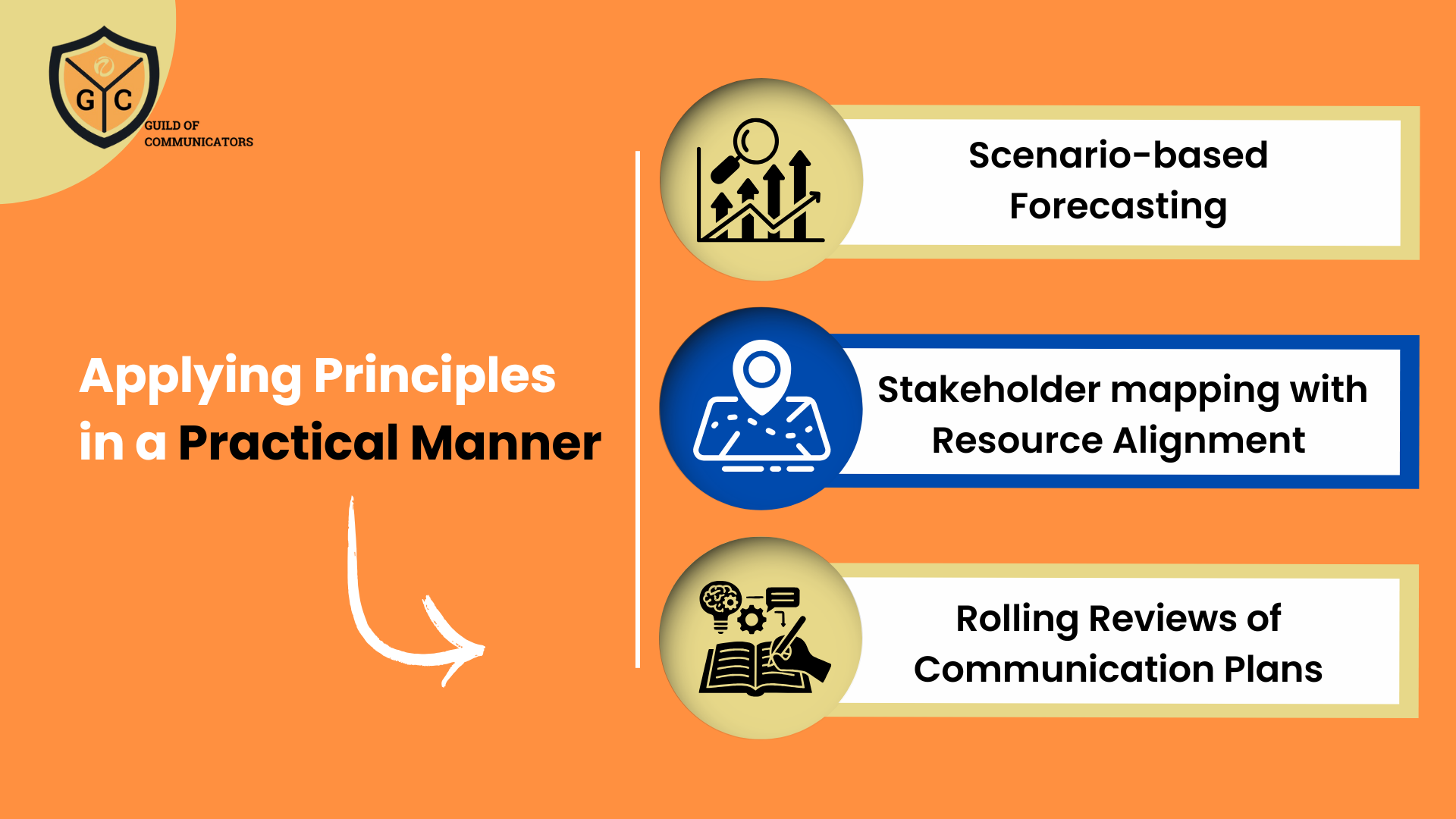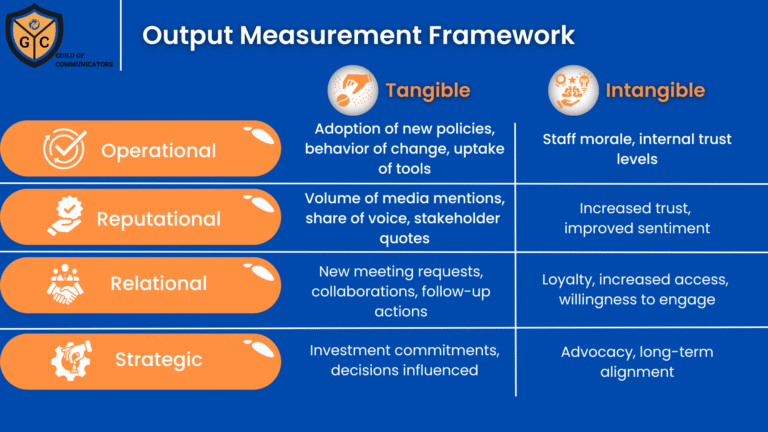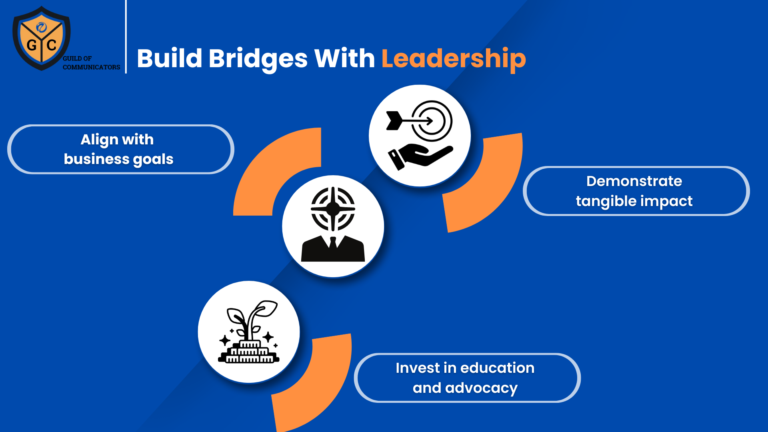In the previous article, we explored five principles for smarter communication planning.
These principles guide how communicators can frame their master plans for 2026:
- Negotiate at the level of outcomes, not just outputs.
- Focus on value and collaboration rather than unit costs.
- Connect the dots at the master plan level, not only at campaign level.
- Treat resources as priorities by demonstrating their value.
- Build relationships on win–win outcomes, not win–lose scenarios.
The next step is to move from theory to practice. How can we apply these principles in real organisational contexts where stakeholders may have competing priorities, limited resources, and differing expectations?
Why Win–Win Beats Transactional Planning
A common mistake communicators make during planning season is treating resource requests as transactions. This often involves listing activities, attaching a cost, and expecting approval. The result is usually negotiation for less budget or more output without considering long-term value.
By contrast, a win–win approach seeks alignment.
Instead of asking for money to “run three campaigns,” you demonstrate how the campaigns contribute to agreed organisational outcomes, while also reflecting the agendas of other functions. This positions your plan as a platform for collaboration, not just a set of requests.
The more you frame your plan as advancing shared goals, the more likely you are to secure support.
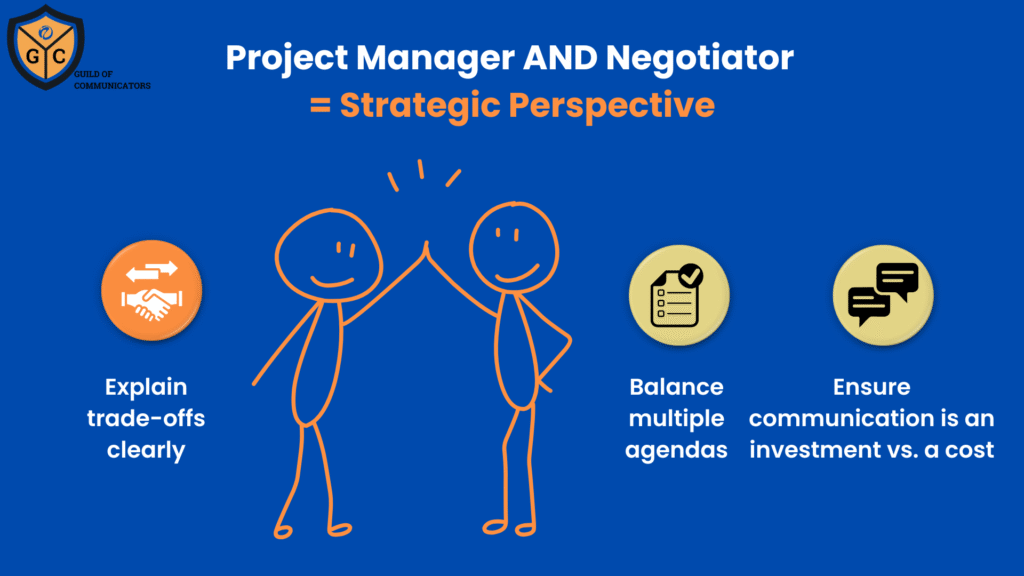
Communicators as Negotiators, Not Just Project Managers
Communicators sometimes see planning as a technical process of timelines and budgets. But effective planning is also about negotiation and persuasion.
Stakeholders judge whether a communicator is strategic based not only on the content of the plan but also on how it is presented. If you present as a project coordinator focused on tasks, you may reinforce the perception that communication is operational. If you present as someone who can align resources to business outcomes, you reinforce your strategic value.
This requires seeing yourself as a negotiator. A role where you balance your agenda with those of other departments, explaining trade-offs clearly, and ensuring that communication resources are treated as investments in growth rather than costs to be reduced.
Two Practical Ways to Apply the Principles Immediately
The principles may seem abstract until you anchor them in practice. Two quick methods help bring them to life:
- Scenario-based forecasting
Instead of presenting one fixed plan, prepare two or three scenarios. For example: a baseline option, a growth option, and a high-investment option. This helps stakeholders understand the trade-offs between different levels of support and gives them agency in shaping the final plan. - Stakeholder mapping with resource alignment
Map key stakeholders by influence and interest, then link their priorities to specific aspects of your plan. For example, the HR director may be most concerned with employee engagement, while the commercial team focuses on customer acquisition. Showing how your plan serves each agenda makes it harder to dismiss your resource requests as isolated or optional.
Both methods make it easier to shift discussions away from outputs and towards outcomes, which is where your principles add real value.
What Psychology Tells Us When We Move from Theory to Action
Why do many communicators struggle to move from understanding these principles to applying them? Psychology offers some explanations.
- Implementation intentions: People often know what to do but fail to create specific “if–then” plans to act. Without a clear trigger for action, the principle stays theoretical. For example, “If a stakeholder pushes back on budget, then I will redirect the conversation to outcomes.”
- Confirmation bias: Communicators may seek evidence that supports their existing way of planning (e.g. activity-based budgeting), ignoring signs that stakeholders want a more strategic discussion.
- Action–information gap: Humans often prefer gathering more information over taking action, because action involves risk. Communicators can get stuck refining their plan rather than applying negotiation techniques.
Understanding these tendencies helps communicators design more deliberate ways to translate principles into practice.
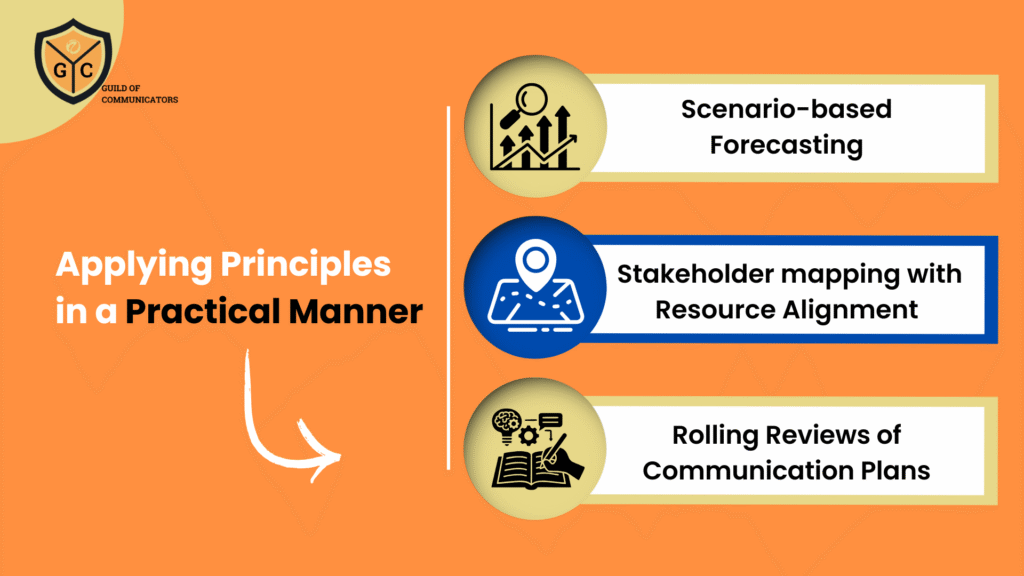
A Third Method of Application — and Why All Three Matter
The five principles of smarter communication planning set the foundation, but it is their application that secures trust, resources, and influence.
Alongside scenario-based forecasting and stakeholder mapping, a third method reinforces the application of principles:
Rolling reviews of communication plans: Rather than treating the plan as fixed for the year, schedule quarterly reviews with stakeholders. Use these sessions to update on progress, adjust to new priorities, and re-justify resource allocation. This shows agility while reinforcing the idea that communication planning is about value delivery, not one-off requests.
Together, these three methods—scenario forecasting, stakeholder alignment, and rolling reviews—ensure the five principles are applied consistently. They provide communicators with a practical way to move from presenting outputs to negotiating outcomes, from requesting resources to building support, and from being seen as operational to being recognised as strategic.
By adopting win–win thinking, embracing negotiation as part of your role, and using structured methods such as forecasting, mapping, and reviews, you make your master plan more resilient and persuasive.
As the new year approaches, communicators who move from principles to practice will not only create stronger plans but also position themselves as credible strategists in the eyes of their stakeholders.
*****
Ready to elevate your communications career? The Guild of Communicators is your essential hub for professional growth, offering a vibrant community and best-in-class resources.
- Connect Membership: Ideal for early-career communicators seeking a supportive peer network, over 300 foundational and intermediate courses, and monthly interactive group sessions.
- Elevate Membership: For ambitious professionals, this tier includes premium frameworks, immersive live online workshops, dedicated career coaching, and mentorship with senior industry leaders.
Discover your path to impact and accelerated career growth.
Join the Guild of Communicators today at www.gocommunicators.com.
(For students: If you’re a student, undergraduate or postgraduate, explore our special student referral programme to lock in your membership fee for the second year! Drop us an email to find out more)
——-
Subscribe to join over 1500+ communicators and brands getting value every Tuesday while reading A Communicator’s Perspective, our weekly newsletter.

